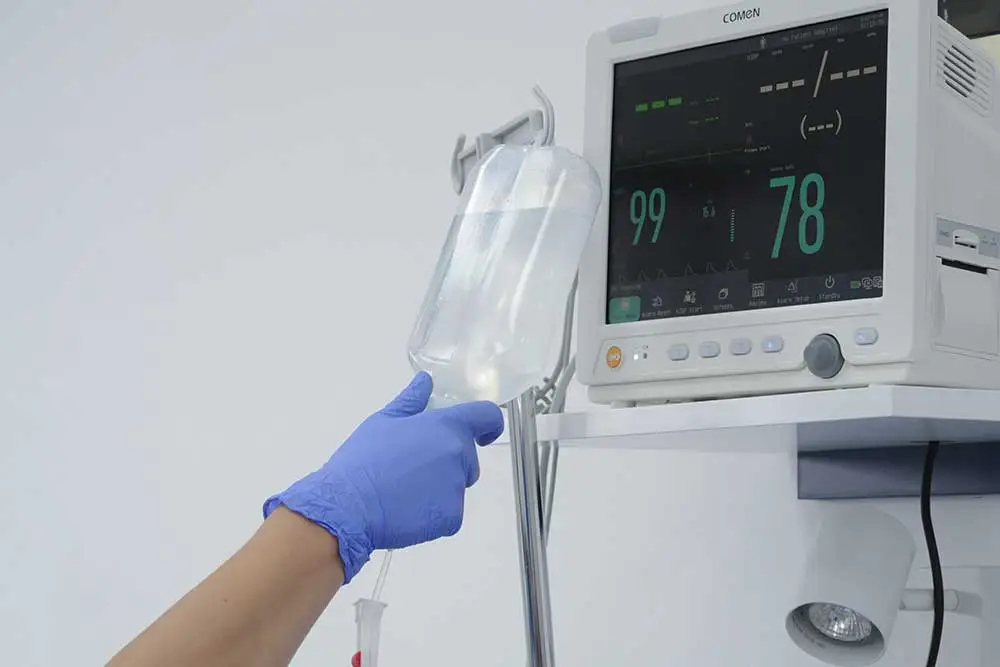Cocaine addiction is one of the most serious problems that can happen when a person repetitively abuses cocaine. This substance is really potent, addictive, powerful and reinforcing stimulant that affects central nervous system. When someone is addicted to cocaine, that means that cocaine’s rewarding effects, along with a dopamine rush, can lead people to use cocaine more and more, often times in large amounts.
Cocaine use and abuse, thus developing cocaine addiction, as the most severe effect of consuming cocaine, is related to many dangerous and harmful health effects. A number of these dangers stem from the comparatively common observe of blending cocaine with different substances, like heroin or alcohol.
If the person close to you is addicted to cocaine and cocaine addiction is having a negative impact on you or your loved one, a cocaine addiction treatment is always available and it will provide you or your loved one a necessary help in order to stop cocaine use and take back control of your lives. There are a lot of cocaine addiction stories that can confirm that full recovery is possible!
To help you better understand cocaine addiction, in this article we will discuss:
- What is cocaine and how does this drug look like?
- How do people use cocaine?
- What are the short-term and the long-term effects of cocaine?
- What are cocaine addiction symptoms and what are the signs of cocaine addiction?
- Where to find help with cocaine addiction?
- What is the best cocaine addiction treatment?
- How to beat cocaine addiction and how to stop cocaine addiction once and for all?
Cocaine addiction – What is cocaine?
In order to better understand cocaine addiction and behavior of someone addicted to cocaine, first of all we need to see what is cocaine. Cocaine is the oldest drug known to mankind. It is produced from the leaves of the coca plant that grows in South America. This psychoactive substance is illegal – except in very rare medical procedures – and is abused for its stimulating effects on the body. Once in medicine used as an anesthetic, today cocaine is known as a dangerous and really addictive drug.
Cocaine is a fine white powdery substance with a bitter taste that dissolves in water and leaves a tingling sensation on the tongue. It can also be found in other forms such as paste or stone. This narcotic reacts with the body’s central nervous system, producing intense energy levels and euphoria. Although most people today know that cocaine is addictive and has a lot of negative effects on body and mind, thousands of people around the world are addicted to cocaine and drawn to it.
Basically speaking, cocaine is an alkaloid obtained from the bushy evergreen coca plant – Erythroxylum coca – that grows in South America, some parts of Africa, Indonesia and Hawaii. Cocaine is obtained by extracting from the leaves of this plant, and approximately 125 grams of cocaine are obtained from one kilogram of coca plant. The end product of coca leaf extraction is 99 percent cocaine in the form of cocaine hydrochloride, which dealers further on combine with other substances similar in color to cocaine (starch, powder, sugar, local anesthetic procaine or the psychostimulant amphetamine). This means that cocaine found on the street has a concentration between 30 and 60 percent of purity.
There are many other names for cocaine, like C, Coke, Crack, Dust, Bump, Blow, Snow, Sneeze, Sniff, Toot, White Rock, etc…
When it comes to cocaine addiction, people sometimes mix cocaine with heroin. This dangerous mixture is referred to as a speedball.
Cocaine addiction and how do people use cocaine?
As we have said earlier, cocaine is a central nervous system (CNS) stimulant. Effects of the cocaine on the brain in large amount contribute to its addictive potential. Cocaine stimulates the brain’s reward system, which reinforces the continuous use of the drug.
The brain’s reward system additionally contains circuits that facilitate to manage motivation and emotions. Once an individual uses cocaine, he or she will overstimulate this system and alter a definite sort of neuron signal to provide rise to feelings of euphoria.
People consume cocaine in various ways: orally, intranasally (sniffing – most common type of cocaine use), intravenously (injecting) or by inhalation. Most often, cocaine is snorted (intranasal use) immediately from the paper where it is packed or through a tube or straw that can be made of paper. This way, the person practically inhales the drug, which enters the bloodstream through the nose tissue.
Another way of cocaine use is by rubbing the powder into the gums. After rubbing, a tingling sensation occurs. Cocaine that is dissolved in water and injected directly into the bloodstream has a very strong effect. When smoking pure cocaine, vapor or smoke is inhaled into the lungs. This, as with injecting into the bloodstream, is a more dangerous type of cocaine administration.
Every time cocaine is consumed, it can lead to stroke, heart attack and other life-threatening conditions. There are many factors that contribute to these conditions and negative effects of cocaine, such as the time of cocaine use, dosage of cocaine taken in to the body, frequency of use, method of administration, overall health of person, etc.

How does Cocaine Work – The Way person becomes addicted to cocaine
We have already mentioned that cocaine primarily produces its pleasurable effects by stimulating the reward system of person’s brain – mesolimbic dopamine system. This circuit is responsible for releasing the neurotransmitter known as dopamine. Dopamine, also known as the hormone of happiness and pleasure, is our body’s main reward chemical that helps motivate persons to repeat rewarding experiences.
The brain always releases some amount of dopamine, which is direct consequence of normally reinforcing experiences, such as eating. However, cocaine use can result in over-activation of the reward circuit by temporarily flooding the brain with great amount of dopamine. This can lead to feelings of euphoria (“high”) feeling, and an urge to continue using the drug.
Nevertheless, dopamine is not the only neurotransmitter which is involved with cocaine’s stimulating effects. Cocaine also increases norepinephrine, which has its role in numerous functions such as in functions like arousal, attention, mood, learning, memory, and the stress response.
Norepinephrine or noradrenaline may also have a role in the reward process by helping to facilitate what some feel are the rewarding effects of cocaine. These pleasing effects may influence relapse or reinstatement of drug-seeking behaviors.
When a person uses cocaine for prolonged period of time, he or she can develop a tolerance to this drug. This happen because some of the neurochemical adjustments associated with repeated and long-term use of cocaine may result in dependence and cocaine addiction. Tolerance to cocaine means that persons will start to feel like they can’t function normally without cocaine in their system. That is the first and the most noticeable sign when someone is addicted to cocaine. Later on, we will discuss what are cocaine addiction symptoms and what are the signs of cocaine addiction.
Also, when person develops physical dependence and psychological addiction, the brain becomes less sensitive to the artificially increased effects of dopamine due to chronic and continuous cocaine use. In other words, a person will feel like they need to take more cocaine (higher doses) or to consume this drug more frequently in order to experience pleasurable effects they felt the first time when they took this substance.
Cocaine addiction and the effects of cocaine
1) Short-term Effects of Cocaine Use
- Increased energy and alertness,
- Extreme happiness,
- Irritability,
- Hypersensitivity to sound, touch or sights,
- Paranoia,
- Narrowed blood vessels,
- Increased heart rate,
- Increased blood pressure,
- Heart rhythm problems,
- Increased risk of heart attack,
- Increased risk of stroke,
- Elevated body temperature,
- Anxiety,
- Psychosis,
- Insomnia,
- Seizure,
- Coma.
There are three stages of short-term effects
– The first stage (euphoric stage) is characterized by a subjective feeling of great intellectual power, along with a feeling of reduced physical and mental effort. Pupils dilate, heart beats faster, blood vessels narrow and blood pressure increases. Also, there is an increase in body temperature. A person under the influence of cocaine is extremely talkative, very impulsive, enjoys a sense of self-satisfaction and is sexually disinhibited.
– The second stage (confused-delirious stage) occurs with an increase of the cocaine dosage. Pleasant hallucinations in the form of reducing the size of objects (Lilliputian hallucinations) dominate here, but also this stage is characterized by illusions, anxiety, irritability and real psychotic reactions (cocaine delirium).
– The third stage (depressive stage) is characterized by apathy, depression and reduced voluntary motility.
Person addicted to cocaine and under the influence of this drug has an excessive security and good mood. Person constantly wants to say something even though he/she has nothing to say, and does not even listen to what others say. Also, person suffers from insomnia because cocaine addiction keeps him/her constantly excited. A person’s behavior is overbearing and therefore irritable and prone to violence. Conceived feeling of self-confidence leads him to megalomania and dreams of grandiosity.
2) Long-term Effects of Cocaine Use
Cocaine is a short acting drug. In other words, depending on the method of administration cocaine’s euphoric and “high” effects may be felt immediately, but also they disappear within a half an hour to an hour. This is the moment when the crash or depressive stage kicks in which is characterized by unpleasant, depressive or negative feelings. There are also cravings that can motivate continued or binge use of cocaine. Some people may drink alcohol or consume other psychoactive substance to help themselves to minimize the negative effects of a cocaine crash stage.
When a person consumes cocaine for a prolonged period of time, continuously and compulsively, there are going to be some negative long-term effects of cocaine use. These effects are consequence of chronic cocaine use and they include:
- Loss of sense of smell,
- Nasal passage inflammation and damage,
- Nosebleeds,
- Trouble swallowing,
- Localized skin inflammation/infection (if a person injects cocaine),
- Hoarseness,
- A risk of having infectious diseases like HIV or hepatitis (if a person injects cocaine and uses joint needle),
- Kidney, lung, brain or liver damage,
- Psychosis,
- Serious problems with gastrointestinal tract, such as tears or ulcerations, due to the reduced blood flow,
- Heart damage, heart attacks, cardiovascular problems such as inflamed heart muscle, chest pain or stroke,
- Tolerance,
- Dependence,
- Cocaine addiction,
- A risk of overdose. Here we need to mention that people can overdose even after the first cocaine use, but this risk is higher in chronic cocaine use. Concurrent use of cocaine and alcohol increases overdose risks.
- Death.

Cocaine addiction symptoms, signs of cocaine addiction and the addictive potential of cocaine
Before we get into cocaine addiction symptoms, let us first explain why cocaine is so addictive. The source of cocaine addiction lies in its impact to the brain’s reward pathway. Stimulating and euphoric effects on the brain reinforce a person’s desire and craving to keep using cocaine, despite all side-effects and negative effects this drug has on a person’s well-being, health and social relationships.
Specifically, cocaine interferes with the synaptic transmission that happens between two brain cells. In normal occasions, dopamine is being released by one neuron (brain cell) into the synapse (the space between brain cells) and attaches to and activates receptors on a neighboring cell. Then, a dopamine transporter removes dopamine from the synapse to maintain a healthy balance. Cocaine totally interferes with this process, which results in too much active dopamine within the synapse, leading to the reinforcing euphoria.
When a person consumes this substance, he/she feels “high”, but once the drug effects wear off and when the person stops using cocaine, a person experiences crash stage. Depressive stage or crash stage reinforces a person’s cravings or urge to repeat the experience, which then rounds off the vicious cycle of cocaine addiction.
Over time, person will develop significant cocaine dependence, which can cause severe and serious psychological and physical withdrawal symptoms when a person suddenly stops to use cocaine. As a way to prevent or minimize the negative effects of cocaine withdrawal, people will most likely continue to use this drug. Along with the tolerance, people will have a need to use more of this drug to achieve the desirable effects which definitely leads to cocaine addiction.
What are the symptoms of cocaine addiction?
- Using cocaine in higher doses, or more frequent doses than originally intended;
- Being unable to stop, reduce or cut down cocaine use, even if a person wants to;
- Spending a lot of time thinking, obtaining, using and recovering from the effects of cocaine;
- Craving or strongly desiring more cocaine, uncontrollable urge for cocaine use;
- Being unable to fulfill daily and ordinary responsibilities and work, home or school tasks due to cocaine abuse;
- Continuous cocaine use, even though a person experiences difficulties in social life or relationships due to cocaine misuse;
- Giving up and ignoring activities a person once enjoyed due to cocaine use;
- Consuming cocaine in situations where it's potentially physically dangerous to do so (such as driving or operating machinery);
- Continuing to use cocaine even though a person has developed or worsened a physical or psychological medical conditions that he/she knows and is aware that is probably due to cocaine use;
- Tolerance to cocaine use,
- Withdrawal symptoms when a person tries to lower the dose or stops using cocaine.
How to stop cocaine addiction and where to find cocaine addiction help?
We have explained what are the signs of a cocaine addict, what is cocaine addiction and how to recognize someone addicted to cocaine. But, there still remain some other questions – how to stop cocaine addiction or how to beat cocaine addiction? What is the best cocaine addiction treatment and where to find an adequate and professional cocaine addiction help?
To all this questions, the answer is really simple – MedTiM International Rehabilitation Clinic!
MedTiM, as an addiction treatment hospital, is a qualified detoxification and rehab clinic and as such is one of the most modern facilities in Europe dealing with the treatment of all forms of addiction! We can provide you or your loved one who is struggling with cocaine addiction all necessary medical help with cocaine addiction! So, if you are wondering “how to beat cocaine addiction” or “how to stop cocaine addiction” and you have tried most of the treatments that did not give the expected results, then you should know that it is time for proven and reliable MedTiM treatment methods!
Our main goal is to provide each patient with a completely personalized program of treatment, detoxification and rehabilitation. In addition to the efficiency and reliability of our treatments, which have proven to be successful based on our patients’ cocaine addiction stories as the example of thousands of cured patients around the world, all our patients are provided with maximum comfort and pleasantness during their stay with us.
Our internationally recognized and award-winning team of experts with decades of experience in addiction treatment will do everything to get every patient back on the right path in life – the path of happiness, health and well-being!

Cocaine addiction in the MedTiM clinic goes away and is cured In just 14 days!
Detoxification and treatment of cocaine addiction at the MedTiM clinic lasts only 14 days, and without substitution therapy at the end of the treatment! This means that in our detoxification and rehabilitation hospital there are no ineffective, months-long and outdated treatment methods, as is the case in many other institutions.
In addition, what differentiate us from others is the fact that we provide all patients with completely painless and safe cocaine detoxification! During the detoxification treatment and cleansing the body of all toxic products of psychoactive substances, the patient will not feel any unpleasant cocaine withdrawal symptoms.
At the end of this treatment, which includes vitamin infusions, pharmacotherapy, as well as special drugs and medicines for cocaine detoxification, all side effects of the cocaine withdrawal disappear, and at the same time the desire for cocaine disappears!
This procedure, which is carried out under the supervision of our expert medical staff, helps the addict’s body to expel all the by-products of cocaine in a safe and faster way.
After detoxification, the process of psychotherapy follows, which is aimed at treating psychological addiction, as well as helping the patient see the essence and roots of his problem, while at the same time acquiring necessary skills to overcome that problem.
Help with cocaine addiction is available at any time at MedTiM International Rehab Clinic!
MedTiM – you will no longer have any cocaine cravings!
– Cocaine addiction will become a thing of the past
After the cocaine addiction treatment at the MedTiM clinic, the patient will notice huge improvements in the quality of sleep, while at the same time his appetite will normalize. Irritability, depression, lethargy and anxiety disappear, while the person will no longer be aggressive and emotionally unstable.
Strength and energy return, the production of endorphins and dopamine will also continue naturally, without the influence of cocaine, which will allow the patient to be happy again and enjoy daily activities. Also, the cocaine withdrawal completely disappears, and the person finally starts to feel relaxed and calm.
– An aversion to cocaine is formed
Cocaine addiction will not control and dictate the pace of a person’s life anymore. After working with our psychotherapists, psychiatrists and psychologists, a person will create a completely negative and repulsive attitude towards cocaine and will feel completely comfortable in his own skin – without the presence of cocaine in the body.
Any thought of cocaine will awaken bad memories, which will make the aversion to this drug even greater. A complete recovery of the personality occurs, the person will discard this destructive habit and vice that destroyed his life, while at the same time creating a healthy value system.
– How to stop cocaine addiction? A cocaine drug blocker enables sobriety and success even after leaving the clinic
After the patient has undergone detox treatment, as well as procedures for the treatment of psychological addiction, he receives a suitable liquid implant – a drug blocker – which enables that the patient’s organism stops reacting to this substance. In other words, cocaine, after administration of a drug blocker, will not have any positive effect on the patient’s body. Therefore, if you are wondering “how to stop cocaine addiction”, a cocaine drug blocker is one of the most effective solutions!
Moreover, with this blocker, the patient’s desire to take cocaine will decrease, and in the case of taking this substance again, negative consequences such as nausea, vomiting and headaches will occur. In addition to blockers, after discharge from the hospital, we provide patients with outpatient treatment for 12 months, and during this period of adaptation we provide complete support.
– The person will be ready to step into a new life!
Individual and group therapies, systemic family and cognitive-behavioral therapies will help the patient to better understand the causes of his problem, while the consequences of cocaine use will be more than clear to him!
A person will begin to fight cocaine not only on a conscious, but also on a subconscious level. While working with our experienced psychologists, a person will learn to accept and deal with his problems. There will be a significant improvement in communication skills, along with the development of the ability to make correct and rational decisions.
The person will love himself again, which is why he will want to repair relationships with people who were damaged by the cocaine use.
To put it simply, after cocaine addiction treatment and receiving cocaine addiction help at the MedTiM clinic, a person will want to return to a normal, healthy and happy life – a life in which there is no place for drugs!
We will help you or your loved one leave cocaine once and for all! You can contact us at any time and call us for a free consultation. The doors of our clinic are always open to you.
Life without drugs is possible!



